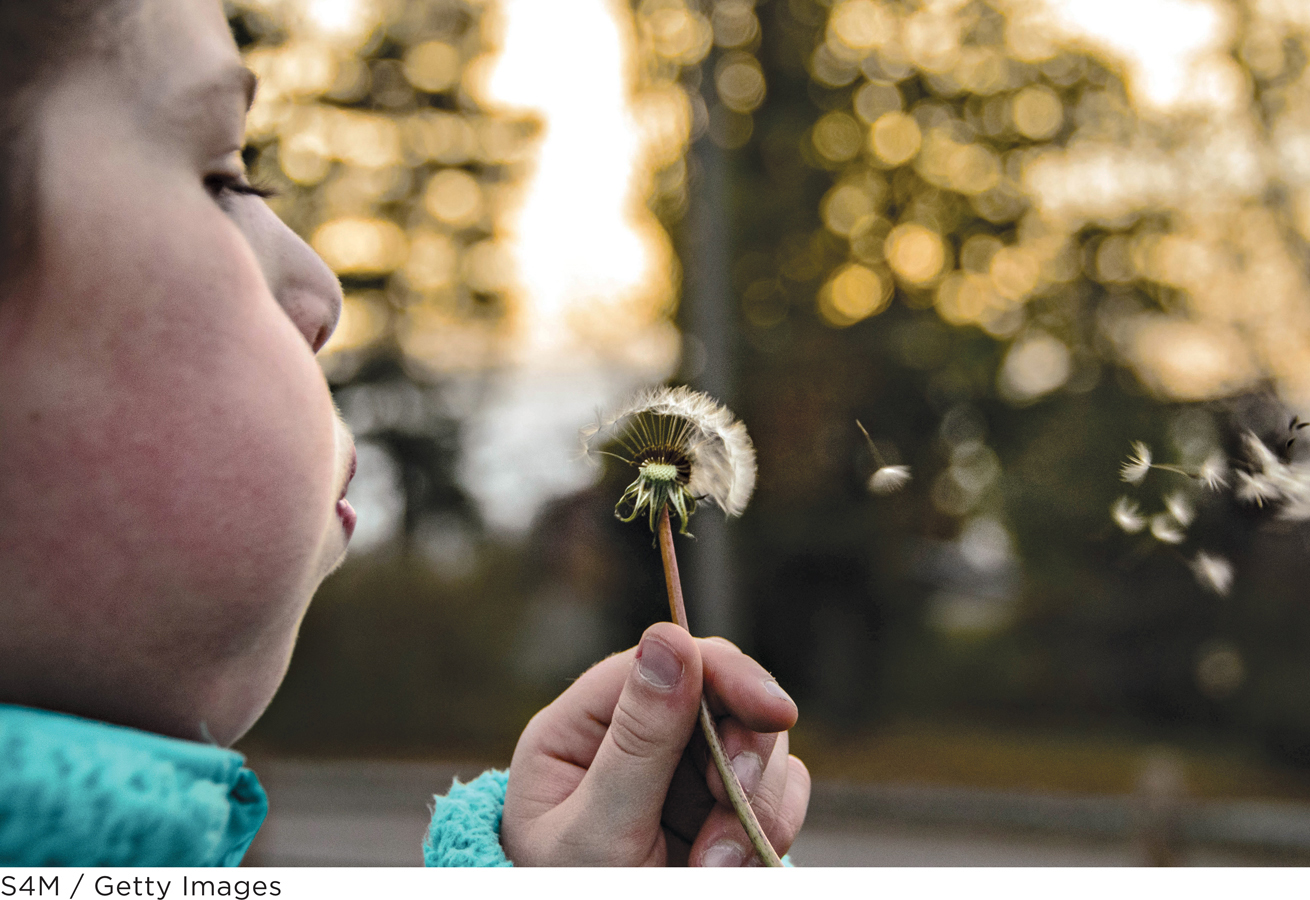Chapter 5 Introduction
Sensation and Perception 5

159
CHAPTER OUTLINE
Perceptual Systems
From Physical Stimulus to Psychological Experience
Transduction
Receptor Cells
The Visual System
Visual Perception
CULTURAL OPPORTUNITIES: Perceiving Absolute and Relative Size
From Eye to Brain: Biological Bases of Visual Perception
RESEARCH TOOLKIT: Eye Tracking
The Auditory System
Auditory Perception
From Ear to Brain: Biological Bases of Auditory Perception
The Olfactory System
Perceiving Odors
From Nose to Brain: Biological Bases of Olfaction
The Gustatory System
Gustatory Perception
From Mouth to Brain: Biological Bases of Gustation
THIS JUST IN: Taste Maps in the Brain
The Haptic System
Haptic Perception
From Skin to Brain: Biological Bases of Haptic Perception
The Kinesthetic System
Sensation and Perception in a Social World
The Experience of Pain
The Perception of Faces
Motivated Perception
Attention
Auditory Selective Attention
Visual Selective Attention
Looking Back and Looking Ahead
HUBERT DOLEZAL, A 29-
Day 1 (early in day): The first few steps I took … tremendously shaky. These steps were awkward, difficult. Any task requiring … precise performatory coordination is horrendously strenuous.
Day 1 (later in the day): I notice a substantial improvement in my ability to walk a straight line after walking only 40 feet.
Day 2: For the first time, I was able to walk down 6–
8 steps without help. The most serious difficulty now is [on] such relatively trivial tasks as operating my portable tape recorder. Day 3: This is the first time I’ve been able to walk upstairs alternating steps (i.e., one footstep per step).
Day 5: I’ve abandoned the use of my walking stick.
Day 6: I’m more sure-
footed than ever before. For the first time, I’ve successfully alternated feet going down the last 6 of the 50 stairs. This was unthinkable even yesterday; yet this morning I did it fairly naturally and briskly. Day 9: For the first time, it’s relatively easy to change batteries in the portable tape recorder.
Day 11: Carrying heavy suitcases up and down wet and slippery mule trails poses no problem.

What a rapid recovery! But from what? On Day 1, it sounded as if our visitor to Greece had sustained major injuries to his legs. Yet on Day 2, he was walking down stairs. On Day 2, he couldn’t operate a simple electronic device. Maybe his hands were injured? A few days later, though, he operated the device easily.
Here’s what actually happened. What Hubert Dolezal “recovered” from was not an injury, but a dramatic alteration in perception. As part of an experiment, on Day 1 he donned upside-
160
He had been seeing right side up for a lifetime. Yet within days, Dolezal adapted to seeing upside down. How could the visual system—
Before we delve into the chapter, here’s a quick fact about vision. Due to the curvature of the front of your eye, images of the world reverse—![]()
IMAGINE YOU ARE an organism—
Each of these is important. Yet they all rely on something even more fundamental: accurate sensation and perception. To find food, you’ve got to be able to see or smell it. To avoid predators, you have to see, smell, or hear them. Avoiding cold and recovering from injury require that you sense the inner environment of your body, to know that you’re cold or injured. Survival requires sensation and perception, our focus in this chapter.